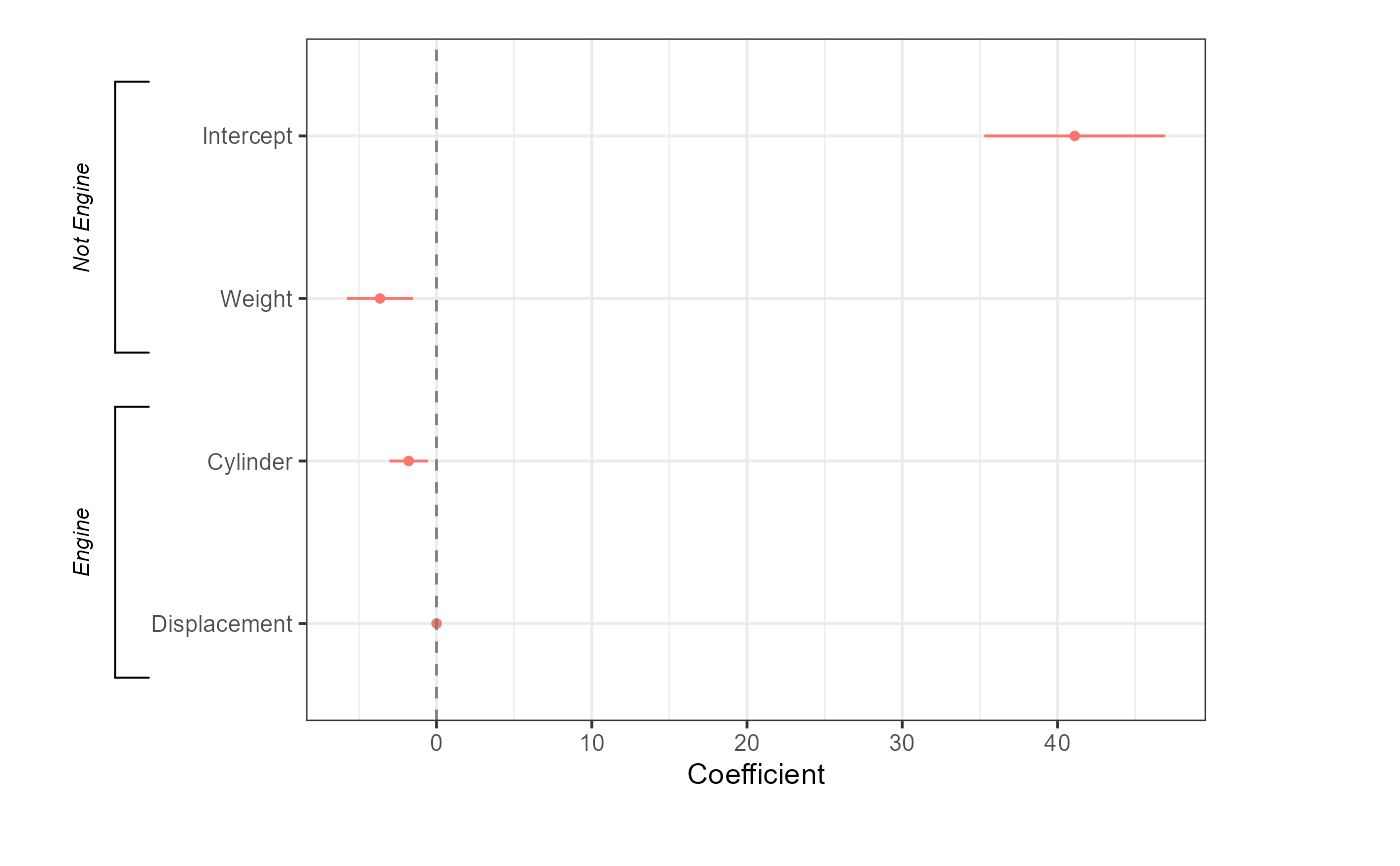Add Labelled Brackets to Group Predictors in a Dot-and-Whisker Plot
Source:R/add_brackets.R
add_brackets.Rdadd_brackets draws brackets along the y-axis beyond the plotting area of a dot-and-whisker plot generated by dwplot, useful for labelling groups of predictors
add_brackets(p, brackets, fontSize = 0.7, face = "italic", ...)Arguments
- p
A plot generated by
dwplot. Any `ggplot` customization should be done before passing the plot toadd_brackets. To pass the finalized plot toadd_bracketswithout creating an intermediate object, simply wrap the code that generates it in braces (`{`and`}`).- brackets
A list of brackets; each element of the list should be a character vector consisting of (1) a label for the bracket, (2) the name of the topmost variable to be enclosed by the bracket, and (3) the name of the bottom most variable to be enclosed by the bracket.
- fontSize
A number defining the size of the bracket label. The default value is .7.
- face
A typeface for the bracket labels; options are "plain", "bold", "italic", "oblique", and "bold.italic".
- ...
Extra arguments to pass to
gpar.
Value
The function returns a ggplot object.
Details
The brackets are drawn by `grid` functions. Apart from font size and typeface, users can customize the appearance of the bracket labels by setting `gpar` arguments in `add_brackets`.
Examples
library(dplyr)
#>
#> Attaching package: 'dplyr'
#> The following objects are masked from 'package:stats':
#>
#> filter, lag
#> The following objects are masked from 'package:base':
#>
#> intersect, setdiff, setequal, union
m1 <- lm(mpg ~ wt + cyl + disp, data = mtcars)
two_brackets <- list(c("Engine", "Cylinder", "Displacement"),
c("Not Engine", "Intercept", "Weight"))
{dwplot(m1, show_intercept = TRUE) %>%
relabel_predictors("(Intercept)" = "Intercept",
wt = "Weight",
cyl = "Cylinder",
disp = "Displacement") +
theme_bw() + xlab("Coefficient") + ylab("") +
theme(legend.position="none") +
geom_vline(xintercept = 0, colour = "grey50", linetype = 2)} %>%
add_brackets(two_brackets)
